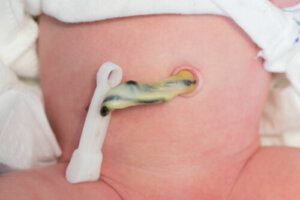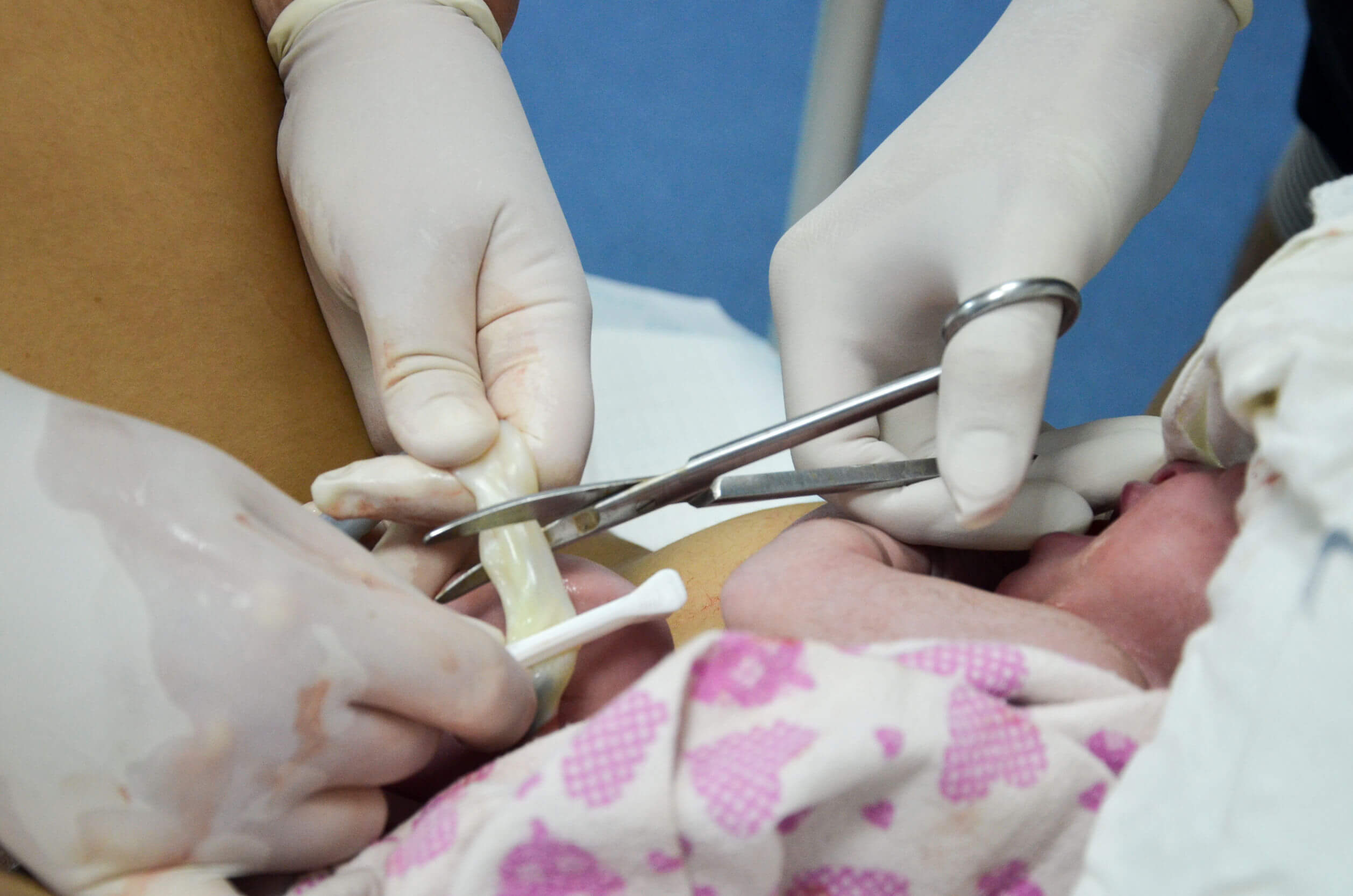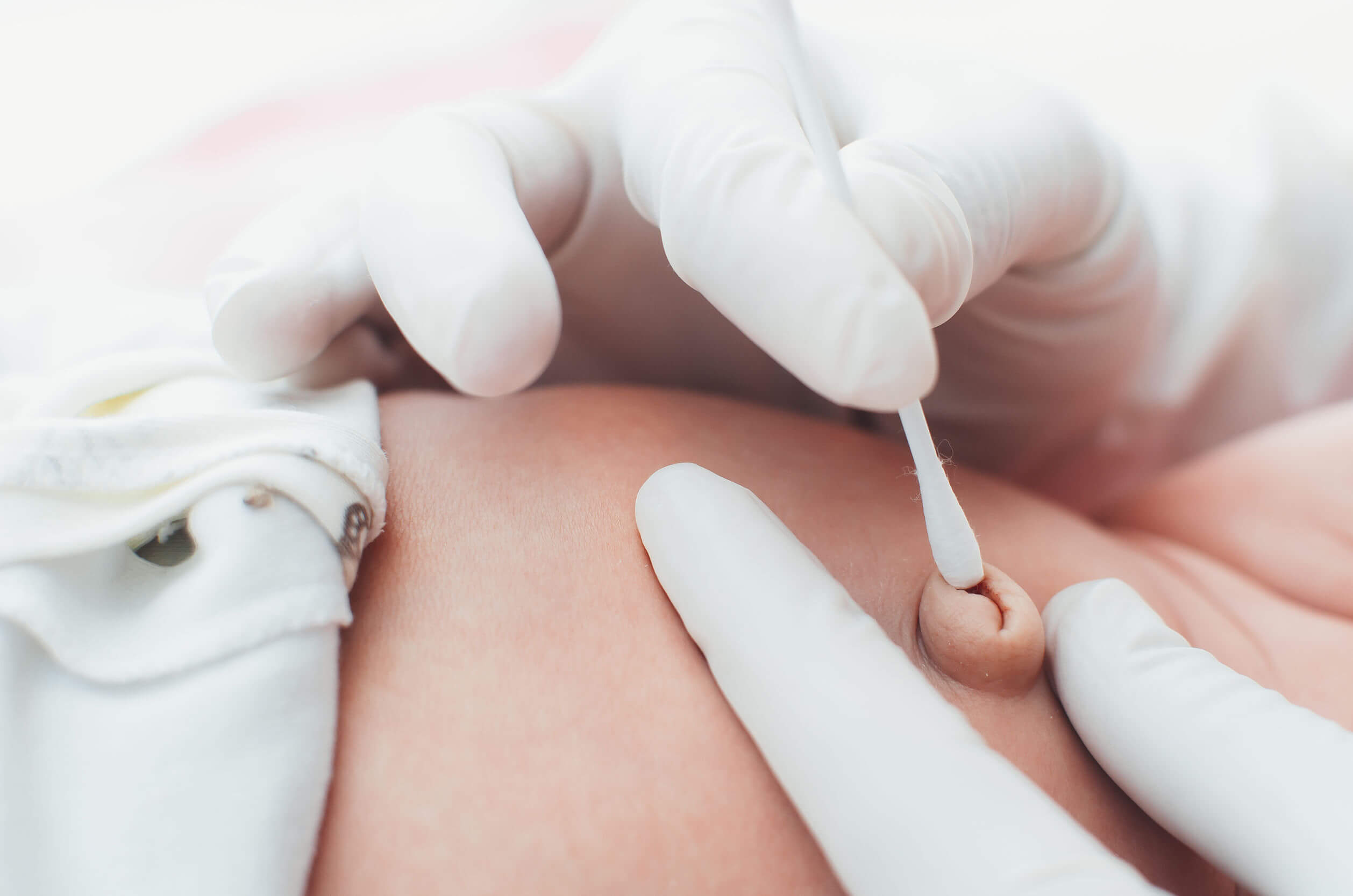Infected Umbilical Cord - Symptoms, Causes and Treatment


Written and verified by the doctor Diego Pereira
An infected umbilical cord is one of the fears of parents during the first days of a baby’s life. It’s also known as omphalitis and, if not diagnosed early and treated promptly, the medical complications could be life-threatening.
If you would like to know a little more information about it, we’ve prepared the following article to answer the most frequent questions among our readers. We’ll discuss the basic aspects of this condition, including its prevention, treatment, and early detection.
What is the umbilical cord used for?

Although the communication that exists between the mother and a developing fetus is evident, it’s important to analyze in depth how this connection works and what allows the free passage of substances from the mother to the future baby.
The placenta is a structure that forms shortly after conception. It contains a large number of blood vessels which, through a structure called the umbilical cord, reach the embryo or fetus to provide it with all the necessary nutrients.
Once birth has taken place, the cord ceases to fulfill its function and falls off spontaneously after a few days. During this time, it loses its vascular supply, so the absence of nutrients prevents further development.
Find out more: The Grades of Placenta Maturity
What’s an infected umbilical cord?
Omphalitis is characterized by the presence of a large number of pathogenic microorganisms that promote multiple inflammatory reactions in the area. The immune system of a newborn isn’t sufficiently developed to cope with this situation, so in many cases, it can lead to medical complications.
From a clinical point of view, the infected umbilical cord is seen with an increased volume (edematous), reddened in relation to the surrounding skin, and with increased local temperature. Fever is also common and, because of the pain, the baby may also cry when pressure is applied to the area.
What are the consequences of an infected umbilical cord?
Imagine for a moment the consequences of a urinary or gastrointestinal infection in an adult. Many of these patients may require hospitalization for several days to receive intravenous treatment. Can you imagine what would happen in a newborn?
As mentioned in the previous section, the incidence of medical complications from infection is very high. This is the main reason why most newborns require hospitalization in a neonatal intensive care unit (NICU) if they present with fever or signs suggestive of infection.
Sepsis is one of these consequences. According to a publication by the Spanish Association of Pediatrics, it’s an exaggerated response of the body to a systemic infection, which can happen if pathogens spread from the umbilical cord to other parts of the baby’s body. Unfortunately, when this happens, mortality can be high.
Is it treatable?
Yes. Babies with an infected umbilical cord are usually hospitalized immediately for treatment. Treatment usually consists of intravenous antibiotics and proper hydration. Other drugs or procedures will depend largely on the degree of impairment of other vital systems, such as the cardiovascular system.
Unfortunately, there’s no specific length of time that this hospitalization may require, as it depends on the health status of each baby. It can last from a few days to several weeks, especially when major complications arise. According to one study, these include necrotizing fasciitis or erysipelas of the umbilical area.
Find out more: The Importance of Human Warmth for Babies in Intensive Care
How to prevent an infected umbilical cord?

After birth, your midwife or obstetrician will most likely give you guidance on basic umbilical cord stump care. It should be cleaned constantly precisely to avoid infections and, although there’s some controversy about it, in general, antiseptic solutions aren’t harmful.
There are specialists who defend their use. A publication of the Pontificia Universidad Católica de Chile, the use of 70° alcohol to clean the less visible areas between the cord and the baby’s abdomen is the most recommendable. Before doing so, it’s advisable to wash your hands thoroughly with soap and water and be sure to use a clean piece of cotton or sterile gauze.
There are also those who say that these substances are unnecessary, as they don’t provide any benefit. A Cochrane Collaboration study states that the use of chlorhexidine in the area hasn’t been shown to reduce neonatal mortality or omphalitis.
This is why many specialists recommend “dry cord care”. Keeping the area dry and only applying water from time to time should be sufficient until the stump falls off. You should also avoid irritation from close contact with the baby’s diaper, so it’s advisable to make a small fold in the diaper so that they don’t come into contact.
Otherwise, being alert to the signs and symptoms of local infection is enough. These include redness, increased volume, increased temperature to the touch, crying when pressing the area, fever, and even the appearance of pus.
Better safe than sorry
The most important thing is to follow the basic measures to prevent an infected umbilical cord. If in spite of this, the symptoms mentioned above begin to appear, you should go as soon as possible to an emergency department that provides care for newborns. Leave the rest of the work to the specialists!
An infected umbilical cord is one of the fears of parents during the first days of a baby’s life. It’s also known as omphalitis and, if not diagnosed early and treated promptly, the medical complications could be life-threatening.
If you would like to know a little more information about it, we’ve prepared the following article to answer the most frequent questions among our readers. We’ll discuss the basic aspects of this condition, including its prevention, treatment, and early detection.
What is the umbilical cord used for?

Although the communication that exists between the mother and a developing fetus is evident, it’s important to analyze in depth how this connection works and what allows the free passage of substances from the mother to the future baby.
The placenta is a structure that forms shortly after conception. It contains a large number of blood vessels which, through a structure called the umbilical cord, reach the embryo or fetus to provide it with all the necessary nutrients.
Once birth has taken place, the cord ceases to fulfill its function and falls off spontaneously after a few days. During this time, it loses its vascular supply, so the absence of nutrients prevents further development.
Find out more: The Grades of Placenta Maturity
What’s an infected umbilical cord?
Omphalitis is characterized by the presence of a large number of pathogenic microorganisms that promote multiple inflammatory reactions in the area. The immune system of a newborn isn’t sufficiently developed to cope with this situation, so in many cases, it can lead to medical complications.
From a clinical point of view, the infected umbilical cord is seen with an increased volume (edematous), reddened in relation to the surrounding skin, and with increased local temperature. Fever is also common and, because of the pain, the baby may also cry when pressure is applied to the area.
What are the consequences of an infected umbilical cord?
Imagine for a moment the consequences of a urinary or gastrointestinal infection in an adult. Many of these patients may require hospitalization for several days to receive intravenous treatment. Can you imagine what would happen in a newborn?
As mentioned in the previous section, the incidence of medical complications from infection is very high. This is the main reason why most newborns require hospitalization in a neonatal intensive care unit (NICU) if they present with fever or signs suggestive of infection.
Sepsis is one of these consequences. According to a publication by the Spanish Association of Pediatrics, it’s an exaggerated response of the body to a systemic infection, which can happen if pathogens spread from the umbilical cord to other parts of the baby’s body. Unfortunately, when this happens, mortality can be high.
Is it treatable?
Yes. Babies with an infected umbilical cord are usually hospitalized immediately for treatment. Treatment usually consists of intravenous antibiotics and proper hydration. Other drugs or procedures will depend largely on the degree of impairment of other vital systems, such as the cardiovascular system.
Unfortunately, there’s no specific length of time that this hospitalization may require, as it depends on the health status of each baby. It can last from a few days to several weeks, especially when major complications arise. According to one study, these include necrotizing fasciitis or erysipelas of the umbilical area.
Find out more: The Importance of Human Warmth for Babies in Intensive Care
How to prevent an infected umbilical cord?

After birth, your midwife or obstetrician will most likely give you guidance on basic umbilical cord stump care. It should be cleaned constantly precisely to avoid infections and, although there’s some controversy about it, in general, antiseptic solutions aren’t harmful.
There are specialists who defend their use. A publication of the Pontificia Universidad Católica de Chile, the use of 70° alcohol to clean the less visible areas between the cord and the baby’s abdomen is the most recommendable. Before doing so, it’s advisable to wash your hands thoroughly with soap and water and be sure to use a clean piece of cotton or sterile gauze.
There are also those who say that these substances are unnecessary, as they don’t provide any benefit. A Cochrane Collaboration study states that the use of chlorhexidine in the area hasn’t been shown to reduce neonatal mortality or omphalitis.
This is why many specialists recommend “dry cord care”. Keeping the area dry and only applying water from time to time should be sufficient until the stump falls off. You should also avoid irritation from close contact with the baby’s diaper, so it’s advisable to make a small fold in the diaper so that they don’t come into contact.
Otherwise, being alert to the signs and symptoms of local infection is enough. These include redness, increased volume, increased temperature to the touch, crying when pressing the area, fever, and even the appearance of pus.
Better safe than sorry
The most important thing is to follow the basic measures to prevent an infected umbilical cord. If in spite of this, the symptoms mentioned above begin to appear, you should go as soon as possible to an emergency department that provides care for newborns. Leave the rest of the work to the specialists!
All cited sources were thoroughly reviewed by our team to ensure their quality, reliability, currency, and validity. The bibliography of this article was considered reliable and of academic or scientific accuracy.
- De La Torre, S. R., Guerrero, G. V., Calvo, R. N., Pérez, P. Á., Flores, J. G., & Cabistany, C. M. M. (2021). Recomendaciones para el cuidado del cordón umbilical en el recién nacido. Revista Sanitaria de Investigación, 2(10), 149. Disponible en: https://dialnet.unirioja.es/servlet/articulo?codigo=8163650
- Diana Esperanza, M. A., Angel Miguel, A. G., Héctor José, P. H., Julia Tamara, A. C., & Virgen Yaneisi, G. O. (2021, August). EL CORDÓN UMBILICAL, IMPORTANTE COMPONENTE PARA LA INMUNIDAD. In cibamanz2021. Disponible en: https://cibamanz2021.sld.cu/index.php/cibamanz/cibamanz2021/paper/view/185/0
- Hernandez Sarmiento, R., Marroquín, A., Casas Cárdenas, C. A., & Fajardo Cardona, A. M. (2022). Onfalitis y Quiste de Cordón Umbilical asociada a persistencia del uraco en un recién nacido. Disponible en: http://repositorio.mederi.com.co/handle/123456789/622
- Iglesias A, et al. Patología Umbilical Frecuente. Protocolos Diagnóstico Terapeúticos de la AEP: Neonatología.
- Lidia Cecilia, P. A., Geanny, R. C., & Rafael, C. F. (2021, November). PRINCIPALES MARCADORES DE SEPSIS NEONATAL PRECOZ. In cibamanz2021. Disponible en: https://cibamanz2021.sld.cu/index.php/cibamanz/cibamanz2021/paper/view/794
- Pérez Mendoza Magdialis, Berasategui Hernández Kenia. Caracterización clínico-epidemiológica de la onfalitis en un servicio de Neonatología. Medicentro Electrónica [Internet]. 2015 Sep [citado 2022 Oct 14] ; 19( 3 ): 157-159. Disponible en: http://scielo.sld.cu/scielo.php?script=sci_arttext&pid=S1029-30432015000300004&lng=es.
- Fernández B, et al. Sepsis del recién nacido. Protocolos Diagnóstico Terapeúticos de la AEP: Neonatología. Disponible en: https://www.aeped.es/sites/default/files/documentos/21_0.pdf.
- Imdad A, Bautista RM, Senen KA, Uy MV, Mantaring III JBlas, Bhutta ZA. Umbilical cord antiseptics for preventing sepsis and death among newborns. Cochrane Database of Systematic Reviews 2013, Issue 5. Art. No.: CD008635. DOI: 10.1002/14651858.CD008635.pub2
This text is provided for informational purposes only and does not replace consultation with a professional. If in doubt, consult your specialist.








